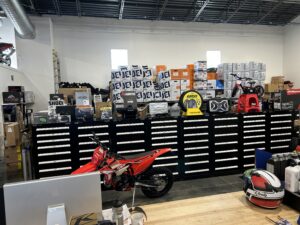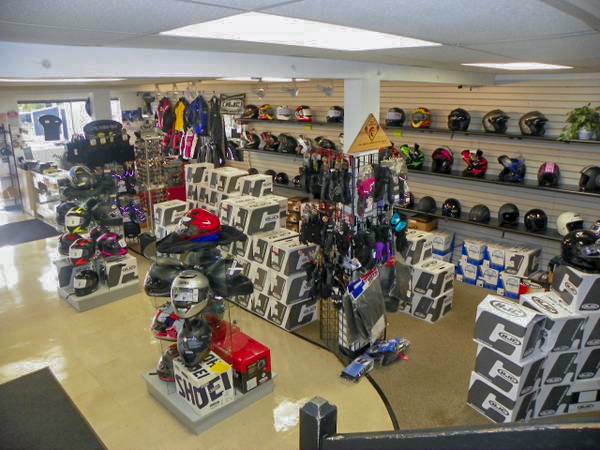Discover High Quality Moto Parts NZ for All Your Motorcycle Demands
Discover High Quality Moto Parts NZ for All Your Motorcycle Demands
Blog Article
Recognizing the Important Parts of a Motorcycle: A Comprehensive Overview for Fanatics
For bike lovers looking to raise their riding experience and ensure their bikes run efficiently, comprehending the important parts of a bike is critical. Each aspect, from the engine's detailed operations to the critical role of the braking mechanisms, not only affects performance but likewise safety and security and comfort. This overview will certainly go through the basic parts that every motorcyclist need to be acquainted with, allowing educated choices in both maintenance and potential upgrades. As we start this expedition, one must ask: exactly how does each part engage to produce the smooth trip every lover looks for?
Engine Elements

The camshaft plays a crucial duty in managing the timing of the engine's valves, guaranteeing the exact opening and closing needed for effective gas and air intake, as well as exhaust expulsion. This timing is crucial to maintaining optimal engine efficiency and effectiveness. Additionally, the carburetor or gas injection system, depending on the motorbike design, is accountable for mixing air with fuel in the correct ratio for burning.
The air conditioning system, either air or liquid-based, functions to preserve the engine's temperature level within functional limitations, protecting against overheating and guaranteeing durability - motocross parts nz. Each component, thoroughly created and incorporated, adds to the smooth operation of the engine, defining the motorbike's power result and overall performance
Transmission System
Essential to the motorbike's functionality, the transmission system makes sure effective power transfer from the engine to the wheels. This system consists of numerous vital components, including the clutch, gearbox, and final drive, each playing a crucial function in equating the engine's power right into activity. The clutch, usually operated by a hand lever, serves to engage and disengage the engine from the transmission, permitting smooth equipment modifications and controlled acceleration.
The transmission, usually referred to as the transmission appropriate, includes a set of equipments that bikers can manually change with to adjust the bike's speed and torque result. These gears are set up in a series that makes it possible for the bike to accelerate efficiently and keep ideal engine efficiency across various rates. A lot of motorcycles use a consecutive gearbox, calling for the motorcyclist to move equipments in a predetermined order.
Braking Devices
While comprehending the transmission system is key to taking advantage of a motorbike's power, equally crucial is the capability to manage and quit that power efficiently, which is where braking systems enter into play. Brakes are essential for security and efficiency, giving the biker with the essential control to navigate numerous surfaces and problems. Usually, motorbikes include two types of braking systems: disc brakes and drum brakes.
Disc brakes are more prevalent in modern bikes due to their premium efficiency. This system provides far better heat dissipation, regular performance, and boosted stopping power, specifically in wet problems.
Conversely, drum brakes, though much less common, are still her comment is here found in some motorbikes. They work by pressing brake shoes against the inner surface area of a drum connected to the wheel. While generally less effective in warmth dissipation and stopping power, drum brakes are simpler and a lot more affordable.
Recognizing these stopping systems' subtleties enables motorcyclists to maintain their bikes appropriately and appreciate the design that makes sure efficient and risk-free quiting.
Suspension and Guiding
Suspension and guiding systems are crucial parts that substantially affect a motorbike's handling and ride convenience. The shock absorber, being composed of forks at the front and shock absorbers at the rear, absorbs roadway irregularities, improving stability and control. Front forks, upside down or usually telescopic, compress and rebound to mitigate effects, while rear shock absorbers maintain tire contact with the roadway, critical for grip and safety and security.
Guiding, centered around the handlebars, attaches the biker to the bike's directional control. The guiding head bearings make certain smooth operation, allowing specific ability to move. Correct alignment and upkeep of these bearings are important for predictable guiding response and decreasing biker exhaustion.
The suspension's adjustability is another crucial element; preload, damping, and rebound setups permit customization to fit numerous riding conditions and styles. This adaptability is essential for optimizing efficiency, whether navigating city roads or dealing with rugged tracks. Innovations like electronic shock absorber use real-time adjustments, boosting ride high quality across diverse terrains.

Electric Solutions
After guaranteeing a regulated and smooth experience through reliable suspension and guiding systems, interest transforms to the electrical systems, a pivotal facet of modern-day motorcycles. These systems play an important duty not just in starting the engine yet also in powering numerous components that improve the functionality and safety and security of the motorbike.
At the heart of a motorcycle's electrical system is the battery, which shops electrical power essential for beginning the engine and powering supporting systems - motox parts nz. The generator visit our website or generator, paired with the rectifier-regulator, makes certain the battery stays charged while the motorcycle functions, transforming mechanical energy right into electric power and maintaining voltage levels
The ignition system, another vital part, is accountable for sparking the air-fuel blend in the engine's cylinders. Modern motorcycles frequently use a digital ignition system, offering better effectiveness and reliability contrasted to traditional systems.
Illumination systems, including headlights, tail lights, and indicators, are also important, guaranteeing exposure and safety for the motorcyclist. Added digital parts such as sensing units, control systems, motorcycle apparel shops near me and displays add to advanced functions like gas shot monitoring, anti-lock stopping systems (ABDOMINAL), and electronic dashboards, further improving the riding experience.
Verdict
A comprehensive understanding of a bike's important components, consisting of the engine, transmission system, braking mechanisms, suspension, steering, and electrical systems, is indispensable for fanatics intending to maximize performance, comfort, and safety. Proficiency of these elements permits educated decisions relating to maintenance and upgrades, ultimately improving the riding experience. By integrating this knowledge, riders can ensure their motorcycles operate at peak effectiveness and dependability, thereby taking full advantage of both pleasure and durability of their lorries.
For motorcycle lovers looking to raise their riding experience and guarantee their bikes run smoothly, understanding the necessary components of a bike is vital.Essential to the motorcycle's functionality, the transmission system makes sure efficient power transfer from the engine to the wheels.While understanding the transmission system is vital to harnessing a bike's power, just as vital is the ability to manage and quit that power effectively, which is where braking systems come into play. Typically, motorbikes feature 2 types of braking systems: disc brakes and drum brakes.
A thorough comprehension of a motorcycle's important elements, including the engine, transmission system, stopping mechanisms, suspension, guiding, and electric systems, is vital for lovers aiming to enhance convenience, safety and security, and performance.
Report this page